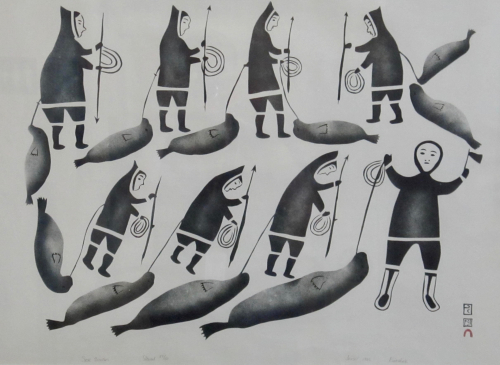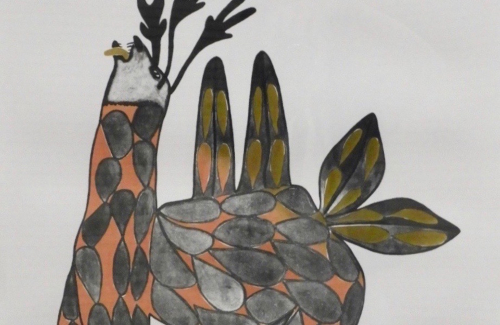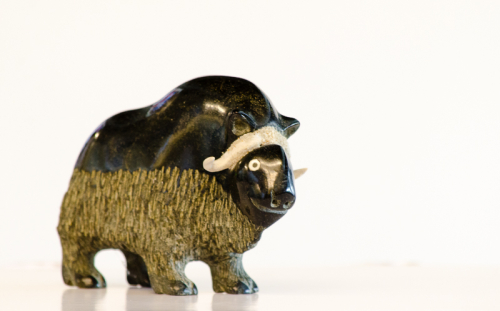The Inuit art collection at McGill comprises a variety of sculptures and prints by famed Inuit artists from Canada, including Aoudla Pudlat, Elisapee Ishulutaq, Jamasie Teevee, Kananginak Pootoogook, Kiakshuk, Pudlo Pudlat, Pitseolak Ashoona, Seepee Ipellie, and Simon Tookoome.

Kiakshuk (1886-1966), a graphic artist from the Ungava Peninsula, in northern Quebec, was an early participant of the Cape Dorset drawing and printmaking movement in Nunavut.. His artistic production took place during his later years, between 1960 and 1966. He created approximately 650 drawings, 52 of which were made into prints. An important storyteller and elder in his community, he was admired for his exceptional ability to translate oral history and stories of hunting, animals, and family relationships into visual art. Kiakshuk's works have been exhibited and collected around the globe.
Seal Hunters, produced the year of Kiakshuk's passing, was one of his final works. It depicts the traditional Inuit practice of sealing.

Pitseolak Ashoona (c. 1904-83) was a prolific Inuit artist based in Cape Dorset, Nunavut. She is recognized as one of the first Inuit artists to create autobiographical work. Her artistic production often included references to traditional Inuit life and contributed to the establishment of a modern Inuit art form that simultaneously transmitted ancestral knowledge and values while achieving international and commercial success. Pitseolak was named a Member of the Royal Academy of the Arts in 1974 and awarded the Order of Canada in 1977 for her outstanding body of work, which includes more than 7000 images.
This print presents a stylized version of a Caribou, a central figure in the Inuit culture. The bright colours and clean delineation of the contours are typical of Pitseolak’s work.

Seepee Ipellie (1940-2000), son of the sculptor Nooveya Ipellie, is a well-recognized Inuit sculptor from Nunavut. Born in Pangnirtung, on Baffin Island, he attended school in Edmonton before relocating to Iqaluit where he spent most of his life. Seepee began sculpting at the young age of fifteen and has produced an impressive number of artworks, most of which are made out of soapstone or serpentine. Ipellie’s work is collected and exhibited across North America. Birds and miniature representations of musk oxen such as this are common in his oeuvre.